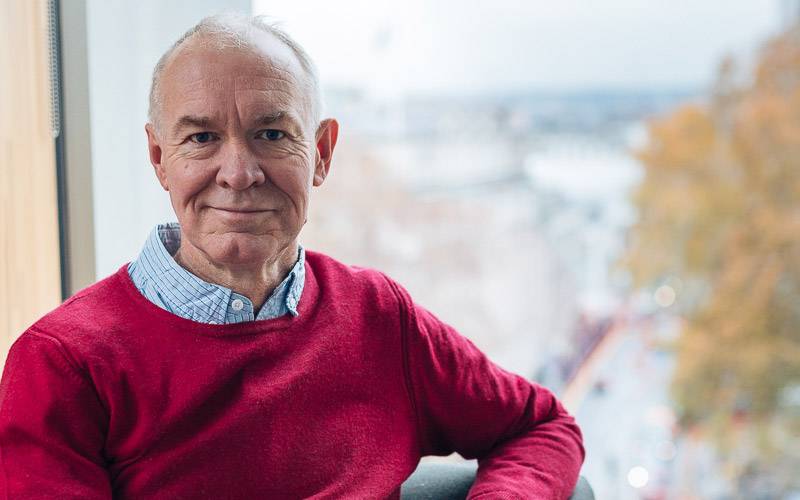Professor Alan Penn, in his last letter as Dean of The Bartlett, says that the built environment professions’ primary responsibility must be to the public at large and to future generations.

Human society and technology are now entangled with the whole planetary ecosystem. Our climate is in transition from the Holocene to the Anthropocene, created by the past 10,000 years of human progress. Social and environmental catastrophe are all too possible. If we are to avoid it, our primary responsibility, as built environment educators and researchers, must be to future generations and the public at large.
Over the past 10 years at The Bartlett, we have been preparing for this transition. It would be disingenuous to say that every move we’ve made has been deliberately strategic; some have been opportunistic, others because they felt like the right thing to do. But our growth –our expansion to accommodate 12 schools, institutes and centres, covering everything from architecture to economics –has been driven by a guiding question: what is the built environment’s role in the world and how can it play a part in shaping a fairer, more prosperous society?
That the buildings and infrastructure we design, build and manage should exert such a force on society is not such a radical premise. The step change in human development occurred in about 10,000 BCE, when it is believed that the climate changes from the Pleistocene that gave way to the Holocene first made settled agriculture possible. At the same time, humans first started to build dense settlements, which presaged a series of social and technological developments. In the space of just a few thousand years, writing, money, agriculture and communal infrastructure for storage and irrigation had all been developed. Sophisticated political structures and laws had been framed and the elements of the earliest states had been formed.
I have argued that one way human social progress was created was the effect of the configuration of built space on the construction of social interfaces. By configuring dense urban settlements with buildings, streets and places, we constructed a mixing mechanism through which new social relationships were generated. The built form directed behaviours and the rules imposed on its use by codes of social behaviour gave rise to new forms. This feedback loop in the built environment, then, is responsible for shaping the emergent pathway of future society.
Today, social structures are not only formed by the way people meet and interact in real space, but also in the virtual space of social networks and communications infrastructure. These structures are transforming and developing more rapidly than was ever possible for the physical and spatial environment. In this situation, it is more or less impossible to rely on past history to predict whether some intervention will work as planned. We need to be able to imagine radical new futures.
Achieving this requires not just an education in new technologies, but also the capacity to think oneself into a future scenario. This relies on intuition, emotion, sentiment and new perspectives that can only be achieved by bringing together people and disciplines.
Our new base at Here East does this. Architects, computer scientists, medical engineers, civil engineers, surveyors, geomatic engineers, fabricators, dancers, acousticians and artists are exploring the benefits new technology creates for human society and the environment, from the macro to the micro. And we are venturing beyond the built form –developing new policy research units aimed at applying this thinking to institutional structures of government and markets, through which society develops.
The Institute for Global Prosperity takes anthropological methods and applies them to sustainable development. The Institute for Innovation and Public Purpose uses insights from institutional economics to redefine the policy debate on the role of public-sector innovation. And The Bartlett Real Estate Institute is bringing analysis of intangible public goods to the valuation of property investment.
My view has always been that you cannot have an excellent education without a diverse cohort. Diversity in every sense of the word is not just something we ought to do, it is a necessary condition of living up to our responsibility to future generations. From 2019, we are announcing The Bartlett Promise. This is a commitment to waive fees and grant a living stipend to a percentage of all our students across all our UG, PGT and PGR programmes. This is a pilot study of how to provide a university education open to all regardless of means, and a challenge to ourselves to provide a higher quality of student experience and service for all. Yes, it is about funding –but it’s also about putting in place the infrastructure for widening participation schemes. By diversifying our student body, our long-term goal is to diversify the built environment professions.
We have chosen to announce The Bartlett Promise in The Bartlett’s centenary year. 2019 will mark 100 years since Henry Herbert Bartlett, a civil engineer and building contractor, whose donation of £30,000 funded a new building to house the School of Architecture, consented to the department being renamed ‘The Bartlett’. We will be using 2019 to explore the radical thinking and projects that have characterised The Bartlett for a century. However, our intention is not to dwell too long on where we have come from, but to set a precedent for where we are going.
Alan Penn, Professor of Architectural and Urban Computing
Dean, The Bartlett
UCL Faculty of the Built Environment
Photo by Michael Chapman
 Close
Close

